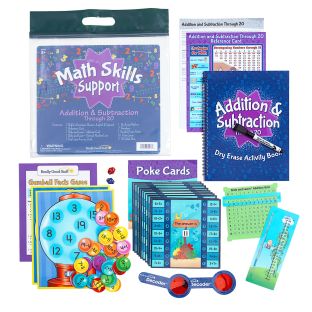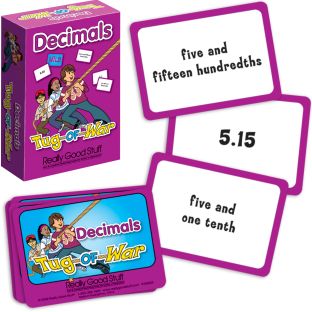Math – Elementary
Popular Elementary Math Materials at Really Good Stuff
Inspire learning and engagement with these popular Elementary Math Materials. These favorite Elementary Math Materials are a great fit for your PreK grade to 8th grade students.
Elementary Math Products
Top-Rated Elementary Math Materials | 2025 School Year
Get top-rated Elementary Math Materials from Really Good Stuff. Teachers give these 93 Math Materials options an average rating of 4.8 stars, making them some of the best Elementary Math Materials available.
Shop Math Materials by Category
Learn More About Elementary Math Materials
Equip your classroom with Really Good Stuff’s Elementary Math supplies. Our catalog of 255 high-quality Math Materials start at $5.99. From premium brands like Really Good Stuff® and Excellerations®.
Really Good Stuff’s Elementary Math products work for ages 6 to 10 years and 1st to 6th grade. Elementary teachers can combine Math supplies with other Math Materials for classrooms with additional products like Math 3 – 6, Math K – 2, and Numeracy Centers.
Make Really Good Stuff your first choice when looking for Elementary Math supplies for the Elementary classroom.
In an elementary classroom, math is more than just numbers and operations; it serves as a gateway to problem-solving and critical thinking skills that students will use throughout their lives. Teachers often employ a variety of methods to make math engaging and accessible for young learners. This can range from hands-on activities like using manipulatives to explain basic arithmetic, to integrating math concepts into storytelling or art projects to foster a more immersive learning environment. Interactive games, group activities, and real-world applications are common strategies that help students grasp complex topics while keeping them engaged.
When choosing math products for your elementary classroom, it’s essential to consider a few key factors to ensure you’re getting the most effective tools for your students. First, look for products that are suitable for the specific age range and grade level of your classroom. Elementary grades, spanning from Kindergarten to 5th grade (ages 5-11), each have distinct learning milestones. Secondly, prioritize versatility and adaptability in your choices. Products that can be used in multiple ways or across several grade levels offer greater value. Finally, make sure the products align with educational standards and curricula, providing a seamless integration into your lesson plans.
Math products designed for elementary students differ significantly from those intended for middle or high schoolers. They should be visually appealing, easy to understand, and robust enough to withstand frequent use. Younger children benefit from more tactile and interactive materials, like counting blocks or visual aids, while older students might require more abstract tools. Accessibility and engagement are crucial – materials that are too advanced or juvenile can disengage students. Always consider developmental appropriateness and the specific needs of your classroom to create a supportive and effective learning environment.
FAQs for Elementary Math Materials
Which Elementary Math Materials are rated highest by teachers for PreK to 8th grade?
- Whack-A-Number Game – Visual, Tactile and Auditory Learning for Fluency in Number Identification – Pre-K, Kindergarten, 1st Grade – 1 game (5 stars) – $44.99
- Unifix® Cubes – Box Of 500 (5 stars) – $54.99
- Time And Money Two-Sided Dry Erase Board Set (5 stars) – $39.99
What Elementary Math Materials are teachers buying most?
What kinds of Elementary Math Materials do teachers usually need?
- Multiplication 0-12 Flash Cards – 94 Flash Cards – $9.99
- Fraction Tower® Fraction Cubes – 51 Pieces – $29.99
- Space-Saver Poster Pack – Intermediate Math (5 stars) – $38.99
What are the least expensive Elementary Math Materials?
- Whack-A-Number Game – Visual, Tactile and Auditory Learning for Fluency in Number Identification – Pre-K, Kindergarten, 1st Grade – 1 game (5 stars) – $44.99
- Time And Money Two-Sided Dry Erase Board Set (5 stars) – $39.99
- Space-Saver Poster Pack – Intermediate Math (5 stars) – $38.99





























